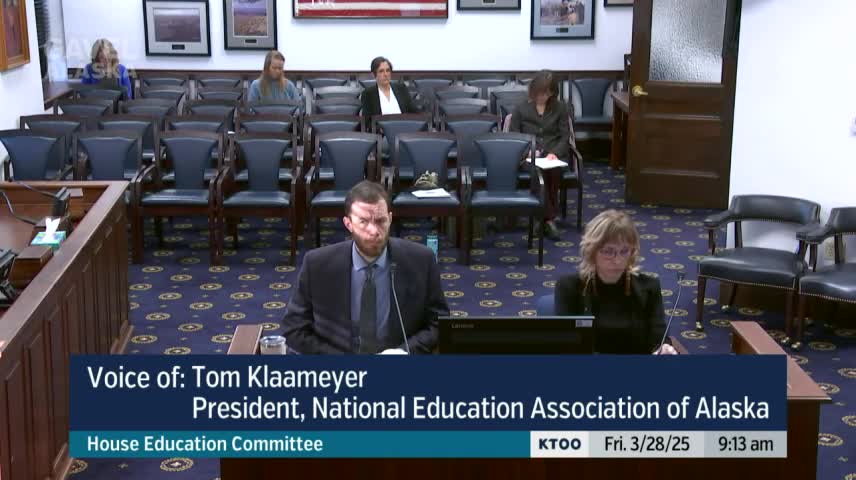Alaska education advocates push for caps on overcrowded classrooms and teacher workloads
March 28, 2025 | 2025 Legislature Alaska, Alaska
This article was created by AI summarizing key points discussed. AI makes mistakes, so for full details and context, please refer to the video of the full meeting. Please report any errors so we can fix them. Report an error »

In a pivotal meeting of the Alaska Legislature's House Education Committee, the urgent issue of overcrowded classrooms took center stage, highlighting the profound impact on both students and educators. As discussions unfolded, it became clear that the current class sizes are not just numbers on a page; they represent the educational futures of approximately 600 children whose learning experiences are being compromised.
The committee heard compelling arguments advocating for the implementation of class size and caseload maximums. Advocates emphasized that smaller class sizes are particularly beneficial for younger students, leading to improved test scores and long-term educational gains. The narrative painted a vivid picture of teachers grappling with overwhelming workloads, struggling to manage large classes while also addressing the needs of students with Individualized Education Programs (IEPs) and other requirements.
The toll of overcrowding extends beyond student learning; it contributes to high teacher turnover rates, creating a cycle that undermines the stability and quality of education. The meeting underscored the notion that a conducive learning environment is equally vital for educators. By instituting caps on class sizes, the workload for teachers could be made more sustainable, potentially leading to higher retention rates and a more experienced teaching staff.
As the discussion drew to a close, committee members were urged to look beyond misleading averages and confront the reality of overcrowded classrooms. The call to action was clear: addressing class size is not merely an administrative concern but a crucial step toward enhancing the educational landscape in Alaska. The implications of these discussions resonate deeply, promising a brighter future for both students and educators if meaningful changes are made.
The committee heard compelling arguments advocating for the implementation of class size and caseload maximums. Advocates emphasized that smaller class sizes are particularly beneficial for younger students, leading to improved test scores and long-term educational gains. The narrative painted a vivid picture of teachers grappling with overwhelming workloads, struggling to manage large classes while also addressing the needs of students with Individualized Education Programs (IEPs) and other requirements.
The toll of overcrowding extends beyond student learning; it contributes to high teacher turnover rates, creating a cycle that undermines the stability and quality of education. The meeting underscored the notion that a conducive learning environment is equally vital for educators. By instituting caps on class sizes, the workload for teachers could be made more sustainable, potentially leading to higher retention rates and a more experienced teaching staff.
As the discussion drew to a close, committee members were urged to look beyond misleading averages and confront the reality of overcrowded classrooms. The call to action was clear: addressing class size is not merely an administrative concern but a crucial step toward enhancing the educational landscape in Alaska. The implications of these discussions resonate deeply, promising a brighter future for both students and educators if meaningful changes are made.
View full meeting
This article is based on a recent meeting—watch the full video and explore the complete transcript for deeper insights into the discussion.
View full meeting
